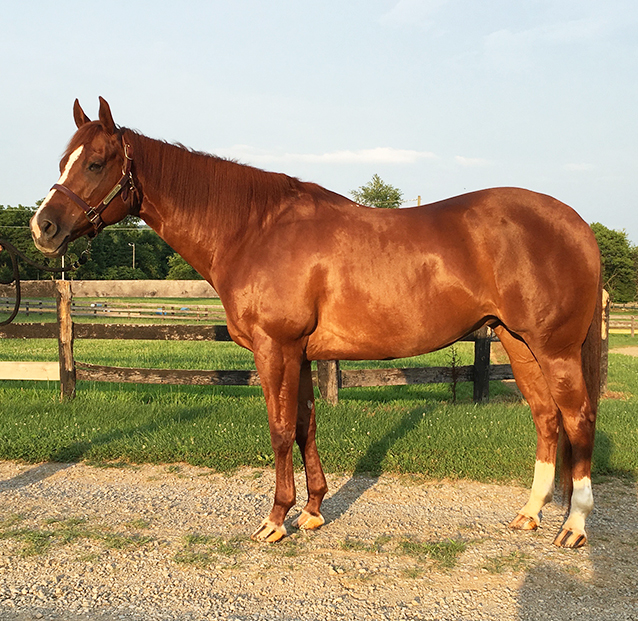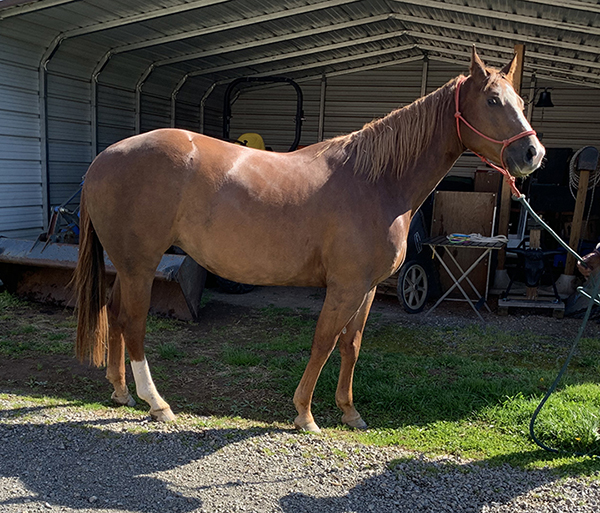How to Market and Sell Your Horse From Home During Quarantine

By: Brittany Bevis
During this time of quarantine and social distancing, you might think it would be a bad time to sell a horse. Not true! Just because horse shows have been put on hold, for the time being, that doesn’t mean you’ve lost your opportunity.
Remember, there is a large, captive audience sitting at home, for the most part, with nothing better to do than watch Tiger King on Netflix…. All joking aside, we’ve written two articles recently about big horse sales. Click here to read Maisy Ewing and HF Tahnee Too and Juliana Arora and The Dark Impulse. That’s all to say that there are horses to sell, and buyers who want them; you just have to be a bit more creative than usual.
We sought out the expertise of Mike and Stephanie Jennings of Professional Horse Services, LLC to find out the top tips and tricks for marketing and selling horses from the comfort of your home.
According to Mike, one of the biggest mistakes people make when trying to market a horse online is that there isn’t a push to create a need or desire to make a purchase. “Many sellers don’t make a buyer want their horse,” he says. “Nobody has to buy a horse. It’s a seller’s job to make a buyer want their horse.”
What are people doing wrong, exactly? Mike says poor photos, bad videos, not enough information, and too much information will do the trick and send a buyer running elsewhere. After all, it only takes a quick scroll or swipe to move on to the next, better marketed, option.
Photos
Let’s begin with photos. Did you know that bad photos can kill interest in a horse, but good photos can make someone want a horse? It seems like a no-brainer, but for some reason there is a disconnect between what makes a bad photo, bad, and what makes a good photo, good.
The best option is to rely on the skills of a professional photographer; but, if that isn’t an option, there is a wealth of knowledge and information in books and on the Internet illustrating how to take a good photo of a horse. You can even learn a lot by studying professional shots to better understand leg placement and how that relates to conformation.

GOOD: This is not a professional picture and was taken with a smart phone; but, the background is not distracting, the ground is level, and the surface is smooth allowing the horse to stand in a balanced way. It shows good foot placement, the halter fits well, there is a good expression on the horse, and the photographer is standing at the girth area of the horse with good lighting. This is an attractive and accurate representation of this horse. The horse is well turned out: clipped and groomed with hoof dressing on her feet.
If you choose to take your own photos, excessive editing can be detrimental, Stephanie says. “Removing the entire background from behind a horse is time-consuming and expensive, and it causes the viewer to wonder what else was altered in the picture. There is a recent trend of placing horses in front of a black background. That’s great for light-colored horses but bad for dark ones. The purpose of a marketing photo is to allow the viewer to see all parts of the horse.”
When taking a photograph, pay attention to foot placement and how that affects balance and conformation. However, don’t try to alter a horse’s conformation with a photograph. “Notice where your horse is standing,” she says. “Don’t place your horse with its front feet in a hole. Conversely, don’t place its front feet on a hill or turn the camera so the background is slanted. This is a form of misrepresentation and causes the viewer to wonder what else you’re hiding.”
When taking sale photos, show the entire horse- both sides and front and rear legs, including the hooves, so buyers can see what they would if they walked around the horse in a barn. Avoid shadows on the horse by having the sun behind the photographer. The background should contrast against the horse. For example, a dark horse should be placed on a lighter backdrop, not in front of dark bushes.

BAD- The mare wearing a poorly fitting halter, there is uneven ground, a very distracting background, and an unpleasant expression on the horse. The leg placement makes her back look low and long, shortens her hip, and makes her hock look straight. She also appears back at the knee. This is a sweet and attractive mare, but the picture does not give that impression at all.
Prepare the horse like you would for a show. Wash, clip, and braid or band your animal. Use show tack, if you have it, or nice quality, clean, work tack that fits and isn’t loose and sloppy looking. You want to present the horse just as if you were presenting to a judge at a show.
Videos
When it comes to marketing videos, things get a little more complicated. You may think you’re doing something creative with zooming and slow motion, but it’s really just annoying. If you’re using a phone to video, hold it horizontally. The horse will stay in the frame better and appear closer to the camera. Two to four minutes seems to be a good length to maintain interest with particularly green horses or one-event horses. Several short videos work well for multi-event horses.
Think about a Longe Line class that shows three gaits in both directions in 90 seconds. A three-minute video can show each gait for 30 seconds instead of 15 seconds. If you’re showing a Reining pattern, Cutting run, or Hunter trip, it should be four minutes or less. For a pattern horse, it’s best to show complete runs. Showing only parts of a run makes buyers wonder what’s being left out and why.
The bottom line is not to bore the buyer. Show what’s needed, but keep it interesting. Show changes of gait and changes in direction. Keep the horse close enough to be seen without having to zoom.
Slow motion is NOT your friend when marketing a horse. It may look cool, but it’s not an accurate representation of how your horse moves. It can be used in an intro to a video, when short clips are spliced together, but Mike doesn’t recommend using slow motion within the body of a video.
For a finished horse, don’t video a training session with schooling. Ride like you’re at a horse show. Another good tip is to put what is most interesting about a horse, or what the horse can do the best, at the beginning of a video to grab a buyer’s attention. Show transitions, particularly lead changes and departures. If you don’t, buyers will wonder why. For young horses that can do more than just three gaits, include additional video to show how they can sidepass, travel over logs, do a lead change, ect.
Be sure to dress both the rider and horse appropriately. A Western horse should be ridden in a Western saddle with show tack and a nice saddle pad. The rider should wear a long sleeved shirt and a hat. English riders should use an English saddle and ride in the same bit as you would use in an English class. “We can’t count the number of times we have watched a Hunter Under Saddle sale video with the horse being ridden in a Western saddle and a shanked bit,” Stephanie says.
Above all else, when marketing your horse, be honest. Show what the horse is really like. “If a buyer thinks a seller has doctored or manipulated videos or photos, you will lose them for this horse and all future horses,” Mike says.
And Mike and Stephanie certainly know what they’re talking about. During their careers as horse auction managers, they have sold more than 70,000 horses and 2,397 for $9,567,525 through their Internet auctions. They have managed the AQHA World Show Sale, Congress Super Sale, and APHA World Show Sale. In addition, Mike was an AQHA judge for 35 years, a NRHA Reserve World Champion, and a three-time Congress Reserve Champion. Stephanie was a NRHA World Champion and a three-time Congress Champion as well.
If there is a particular skill you would like to learn while you’re in quarantine at home, email B.Bevis@EquineChronicle.com with your suggestion.










